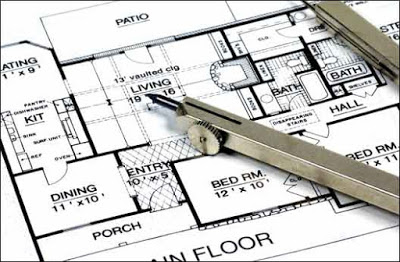Estimation is the technique of calculating the coast of expenditure on a particular project. Estimation is necessary as it clearly gives an idea about the cost and time required to complete a project. An estimate helps to decide whether the funds and time allocated for the project is enough or not. To call tenders and to arrange the contractors also an estimate is necessary. A complete estimate doesn’t mean only the inclusion of labour, material cost. Many other direct and indirect cost influence an estimate. The process of cost estimating starts with gaining clear understanding of project work. Which means a clear knowledge on work execution methods and works that impact the overall cost should be considered. Secondly proper quantity takeoff using drawings, equations, practices and other necessary materials is the right step in the process of cost estimating. The next step is filling up with the unit rate to the estimated quantity using available sources such as subcontractors, suppliers, cost records and national cost data. Final step of cost estimating is to double check the finalized estimate. A complete estimate may include,
1) Cost of land – Which includes the actual cost of land, cost of surveying, cost of verification of deeds & execution of deeds, brokerage amount (if any).
2) Legal expenses between owner & contractor and contingencies. (Contingencies – cost that help to deal the unforeseen or unknown risks and they are expressed in terms of percentage).
3) Cost of structure – Which includes cost of labour, cost of material, cost of equipment, permit fees for water & electricity, consulting engineer fees, preparation of plan/ estimate/ design and cost of supervision.
4) Over head charges – A particular percentage of the total cost is added normally to meet the unpredictable expenses.
Documents and details necessary for the preparation of an estimate are as follows,
Drawings – Complete plan, elevation & sectional drawings. They should be with complete dimensions.
Specifications – Quantity & quality of the necessary materials, Detailed workmanship such as number of skilled and unskilled workers necessary to complete the work, number of days/ hours needed to complete the work, etc.
Rates –Standard schedule of rates of the current year/month which should include the unit rate, cost of transportation, wages of skilled or semi skilled labours.
Types of estimate
(1) Preliminary or Approximate estimate.
This estimate is required to make decision regarding the preliminary works exist on a project, to make decision regarding the finance needed for the whole project and to get the administrative sanction by the capable authority.
(2) Rough cost estimate based on plinth area.
This estimate is calculated by finding the plinth area of the building and multiplying by the plinth area rate. The plinth area rate could be obtained from the coast of similar building having similar specifications in the location.
(3) Rough cost estimate based on cubic contents.
This estimate is prepared by multiplying the volume of the building with the cubic area rate. The cubic area rate is obtained from the cost of the similar building in the location having similar specifications.
(4) Detailed estimate.
This estimate is prepared by the following process, dividing the work into different items taking detailed measurements of each item of work and finally calculating their quantities.
(5) Annual repair estimate.
This estimate is prepared for annual repairs or maintenance. Here, the estimated cost should be within 1.5% of the total cost of the building.
(6) Special repair estimate.
This estimate is prepared when a work can’t be complete within the allocated annual repair estimate.
(7) Revised estimate
This estimate is prepared when variation of item of works occurred and when those variations of works effect as cost overreach in the already prepared estimate.
(8) Supplementary estimate.
This estimate is prepared when there is a necessary for additional work. The estimate prepared for that additional work is known as supplementary estimate.


